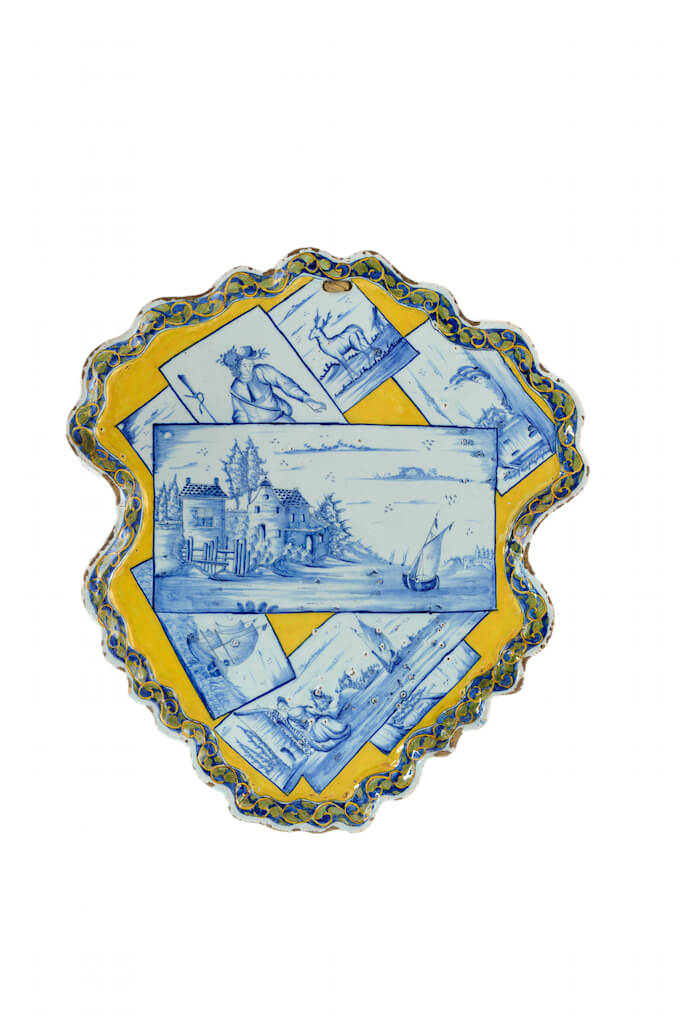D1757. Polychrome Shield-Shaped Plaque
€24.000,00
Delft, circa 1760
Painted on the yellow ground with several blue and white overlapping rectangular images of sea- and landscapes, a hunter and a deer, the scalloped rim with foliate scrolls in yellow, green and iron-red against a blue ground.
Dimensions
Height: 37.8 cm. (14.9 in.)
有货
描述
Note
The blue and white rectangular images of sea and landscapes painted on the yellow ground resemble postcards or tiles scattered atop a plaque. While the painter certainly demonstrated artistic license in the detailed compositions, they are most likely based on prints, either collected by the potteries for use in its ceramics, or supplied by a client for a special commission. Various types of prints were available to Delft artists during the seventeenth and eighteenth centuries, such as woodcuts, etchings, and engravings. It was not uncommon for artists and painters to freely borrow imagery from these print sources. The reuse of printed images both reflected and determined contemporary styles and tastes, as well as being instructive for the artisans.
The plaque demonstrates the trompe l’ceil (deceive the eye) technique, a style often used in old master paintings to captivate and fool the viewer. For Delft potters, they probably took inspiration from seventeenth and eighteenth century still life paintings with highly realistic details such as notes, drawings, and letters. As can be seen on this plaque, the overlapping scenes with depth and realism create an optical illusion. The composition and subject are reminiscent of the popular Delft dishes and bowls painted with playing cards. One such plate is illustrated in Lahaussois 1994, p. 80, no. 99, who comments on p. 96 that it was the Delft potters who can be credited with the idea of trompe l’oeil decoration of playing cards on ceramics, a style that became popular in the Netherlands from about 1730. It continued in popularity particularly on French faience throughout the second half of the eighteenth century, and on faïence fine (refined cream-colorer earthenware) and English porcelain in the early nineteenth century.
其他信息
| Price | €10.000 – €40.000 |
|---|




